Cheeky's Cannabis Merchants
In this 3-week academic team project, I worked in a team of 5 to digitize the in-store experience of Cheeky's Cannabis Merchants to help support first-time cannabis consumers, providing them with the knowledge they need to comfortably make a purchase.
This case study is not affiliated with Cheeky's Cannabis Merchants as a client and this project was performed for educational purposes.
Team
Brianna Mei, Christina Raganit, Madeline Ho, Michael Dresler, Simon Wong Chung
Roles
UI Design, Wireframing, Interaction Design, Prototyping
Course
IAT 235 | Information Design
Duration
February 7–28, 2023 (3 weeks)
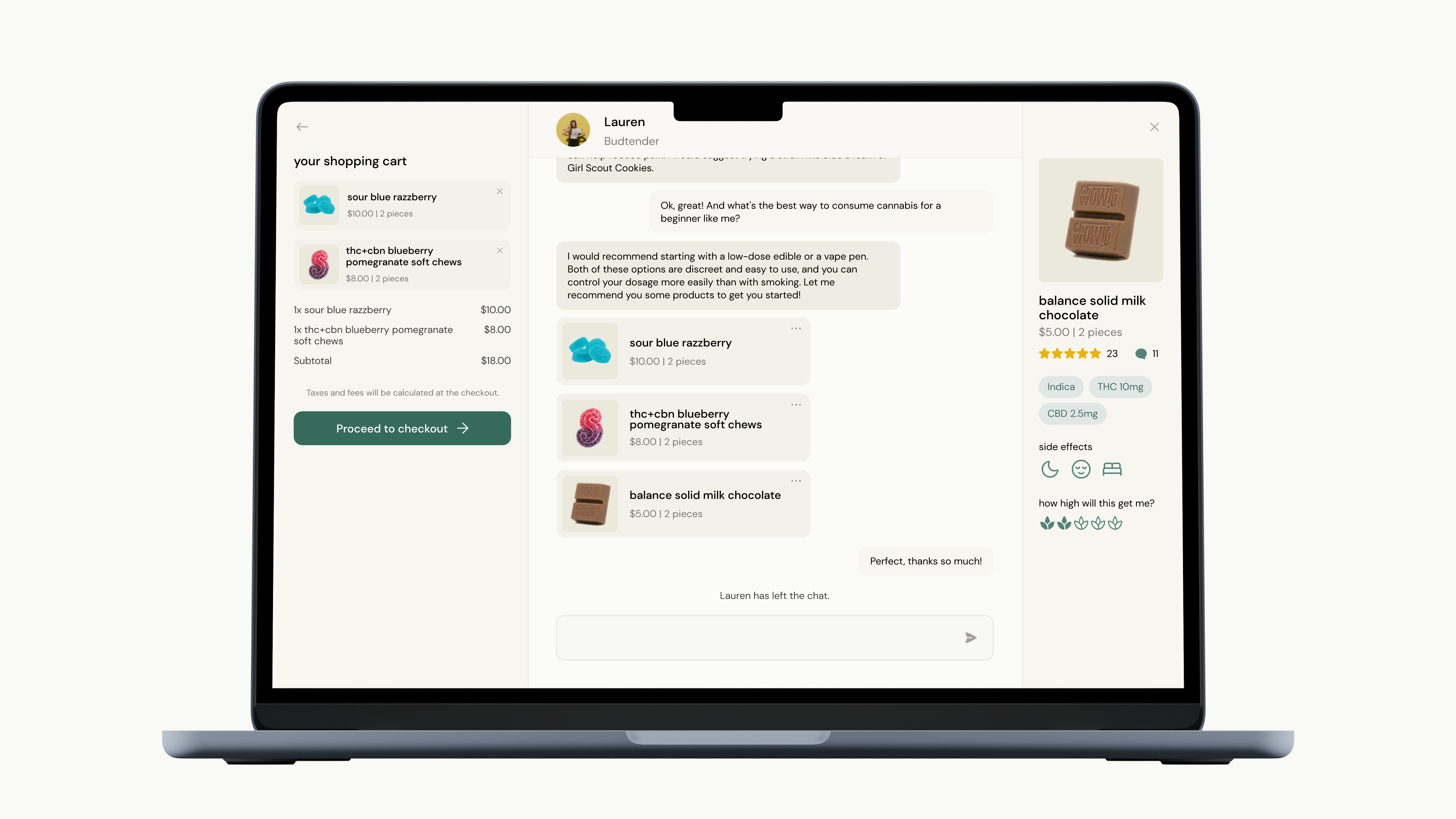
Final solution in a device mockup
My Role
As the user interface designer and interaction designer, I was primarily responsible for creating mockups and wireframes on Figma and prototyping interactions to articulate the user flow of our proposed solutions. I created a library of interactive components and organized typography, color, and grid styles to ensure visual cohesion in the interface.
Check out some of the highlights below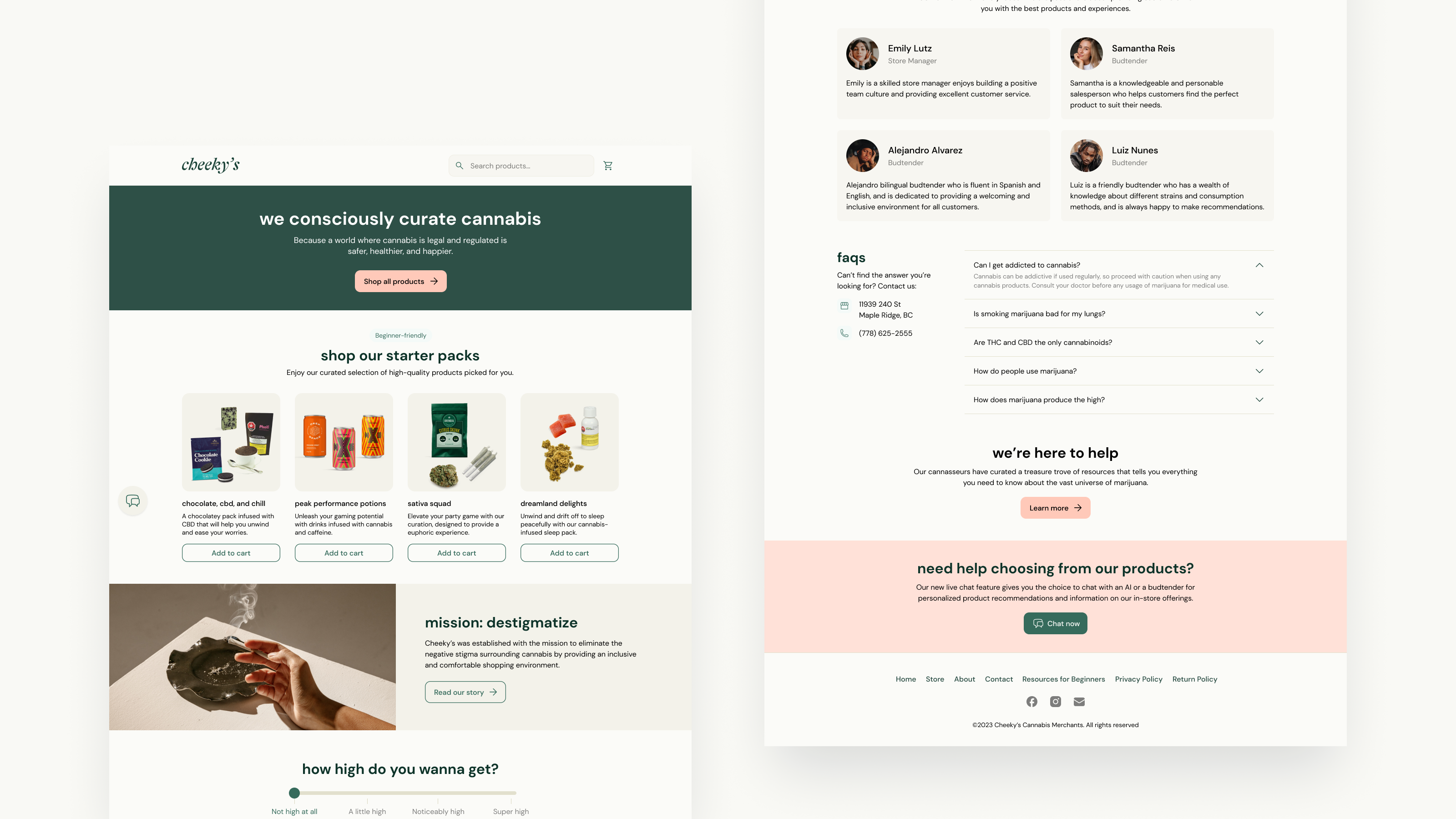
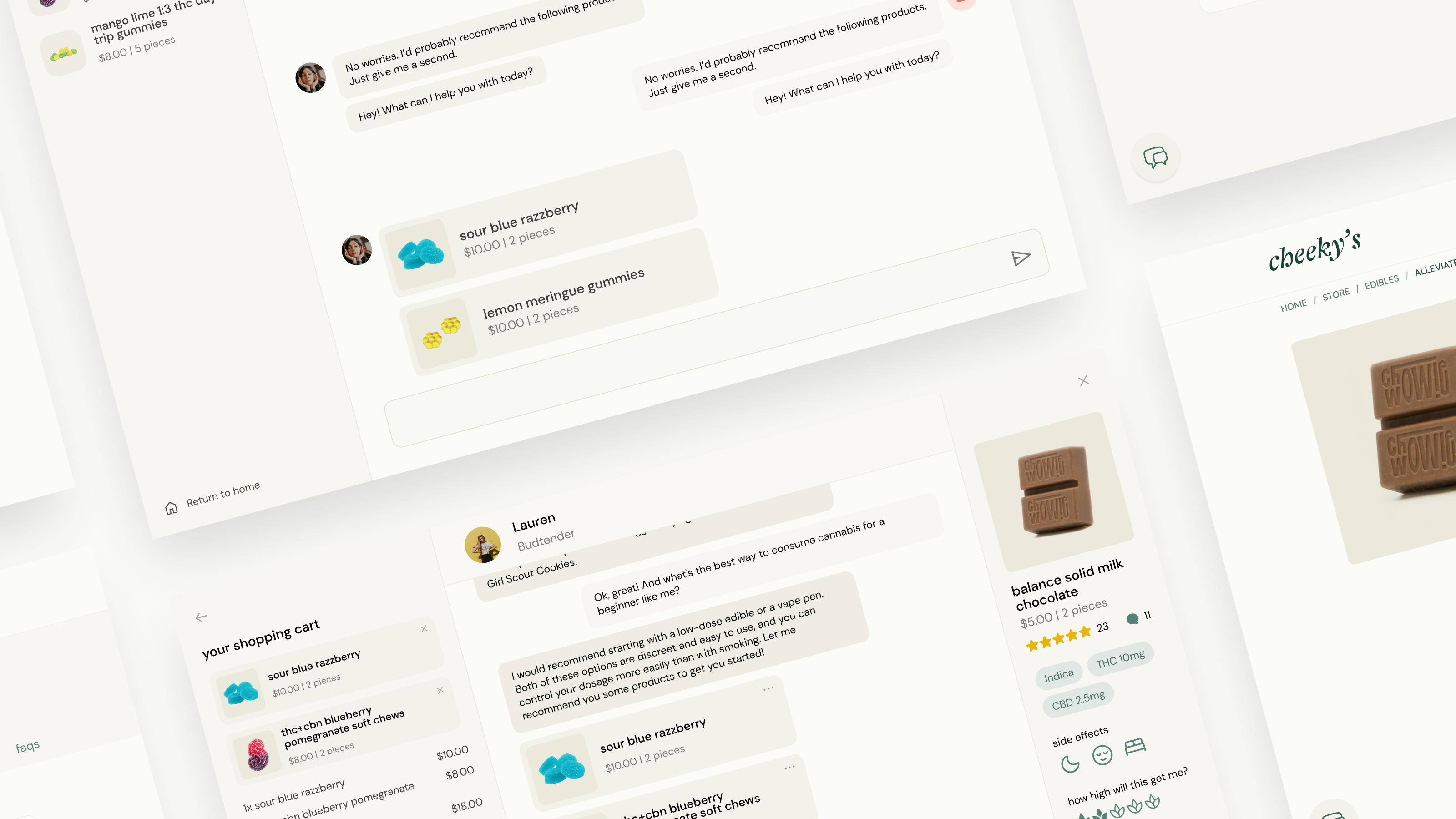
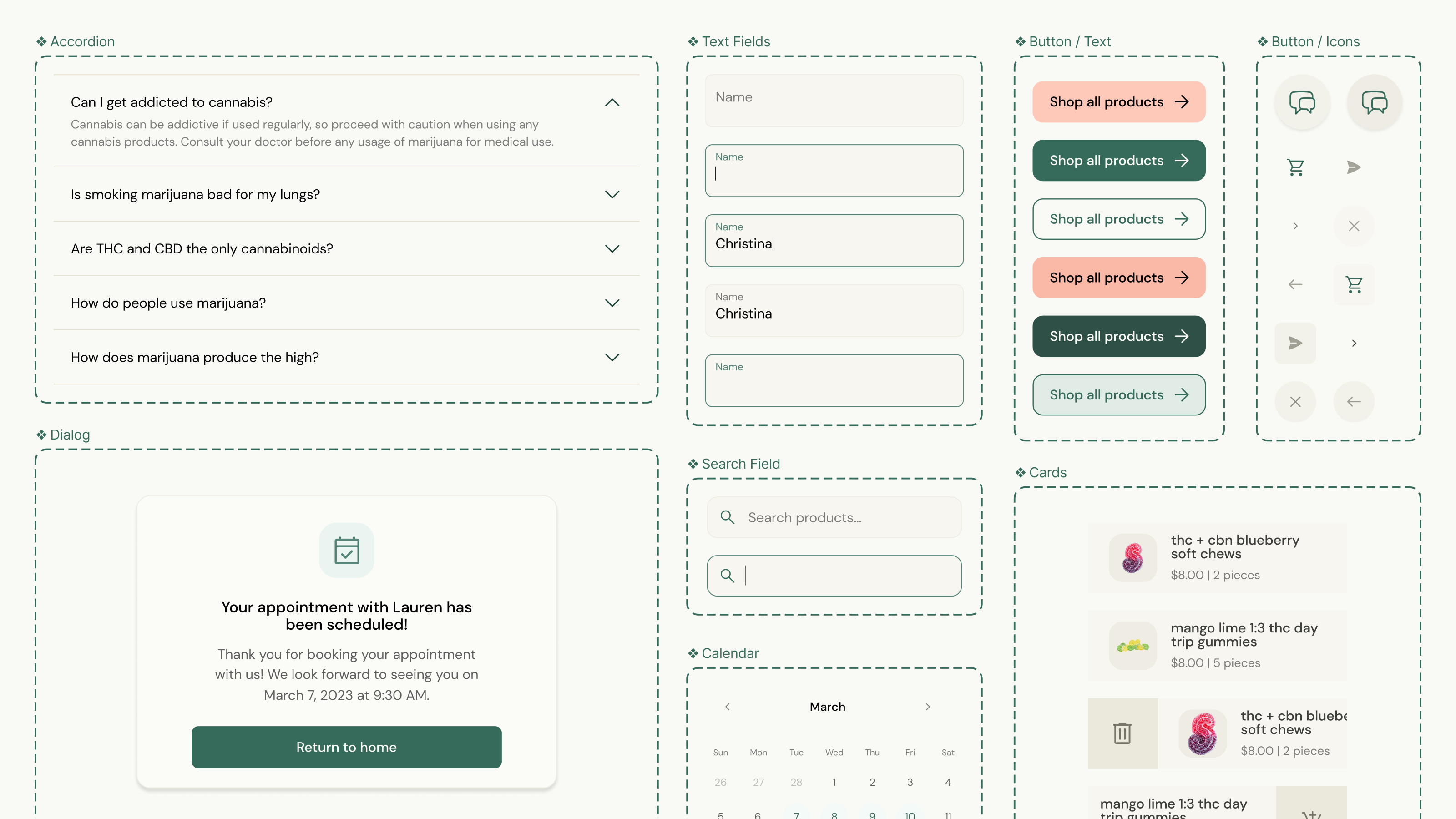
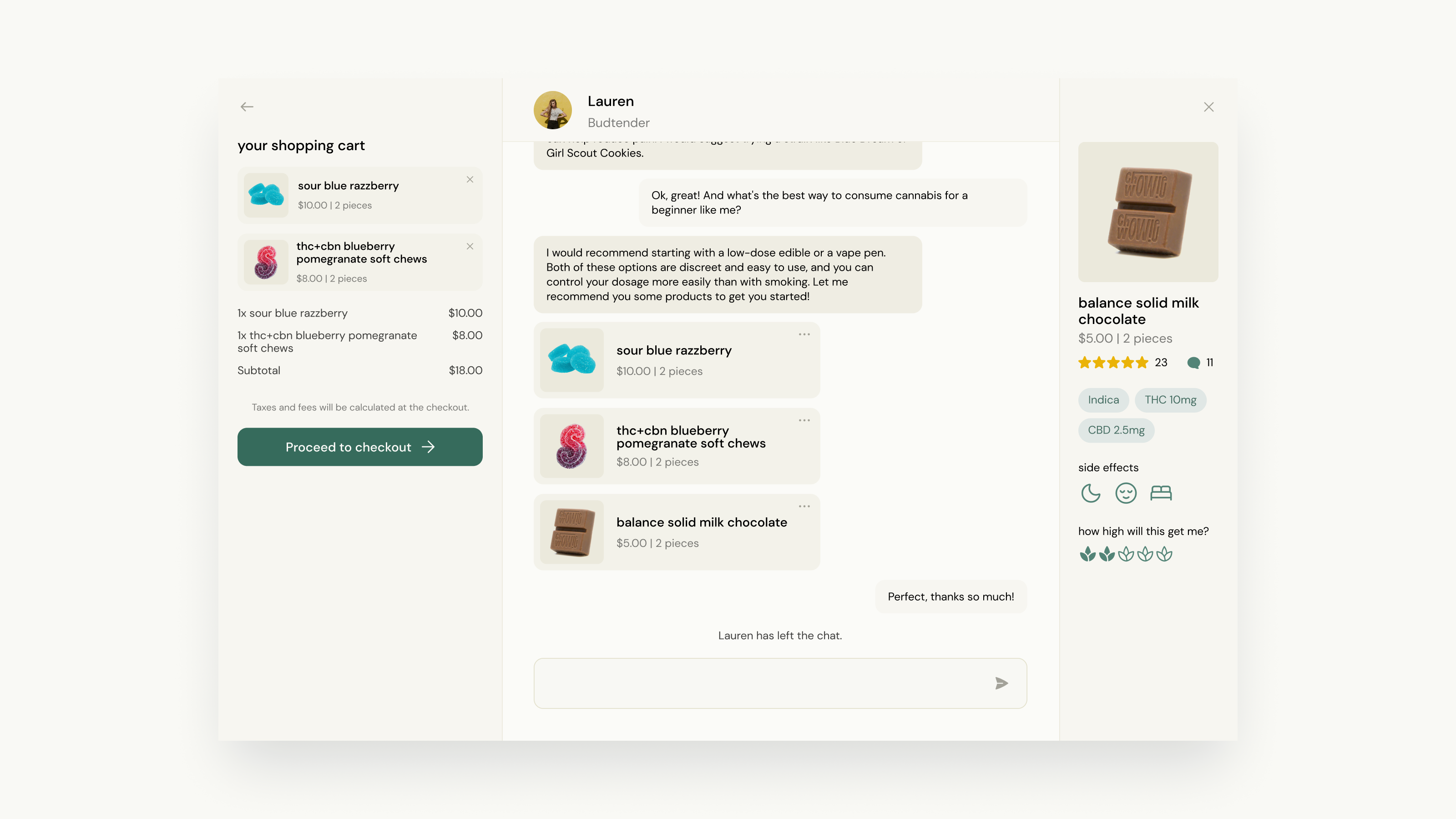
Problem Space
According to a study performed by the University of British Columbia, first-time cannabis consumers often feel lost navigating the use of cannabis without guidance from their doctors.
However, during their first visit to a dispensary, employees (or budtenders) are able to explain product options, make suggestions based on the consumers’ preferences and needs, and answer questions about dosage. Unfortunately, online shoppers miss out on this guidance.
In a survey studying responsible cannabis use, 67% of Ontarians believe that retailers must educate consumers on cannabis—both in-store and online. Thus, it’s imperative that the in-store shopping experience provided to consumers can also be experienced in the digital space.
Design Challenge
How might we provide novice cannabis consumers that prefer to shop online with a digital shopping experience that is equally accessible and inviting as it is for those who shop in-store?
Proposed Feature
Connecting budtenders and online shoppers
If a budtender is available, the consumer can start a chat to receive guidance on what product best suits their needs. They can ask questions and receive product recommendations from the budtender—which they can add to their cart and checkout when they feel ready to make a purchase.
A user chats with a budtender, asking specific questions about cannabis usage
Proposed Feature
Providing options for busy budtenders
In peak hours, a budtender might not always be available to help a customer out. The consumer can speak with an AI-powered chatbot instead or even book an in-store appointment with a budtender to guarantee that they can receive the guidance they need should they choose to when visit an in-store location.
A user books an in-store appointment with a budtender
Proposed Feature
Carefully curating cannabis starter packs
Budtenders can curate cannabis starter packs to help beginner consumers meet their needs. By anticipating what cannabis consumers might consume cannabis for, budtenders can improve their experience by reducing the amount of learning they need to do.
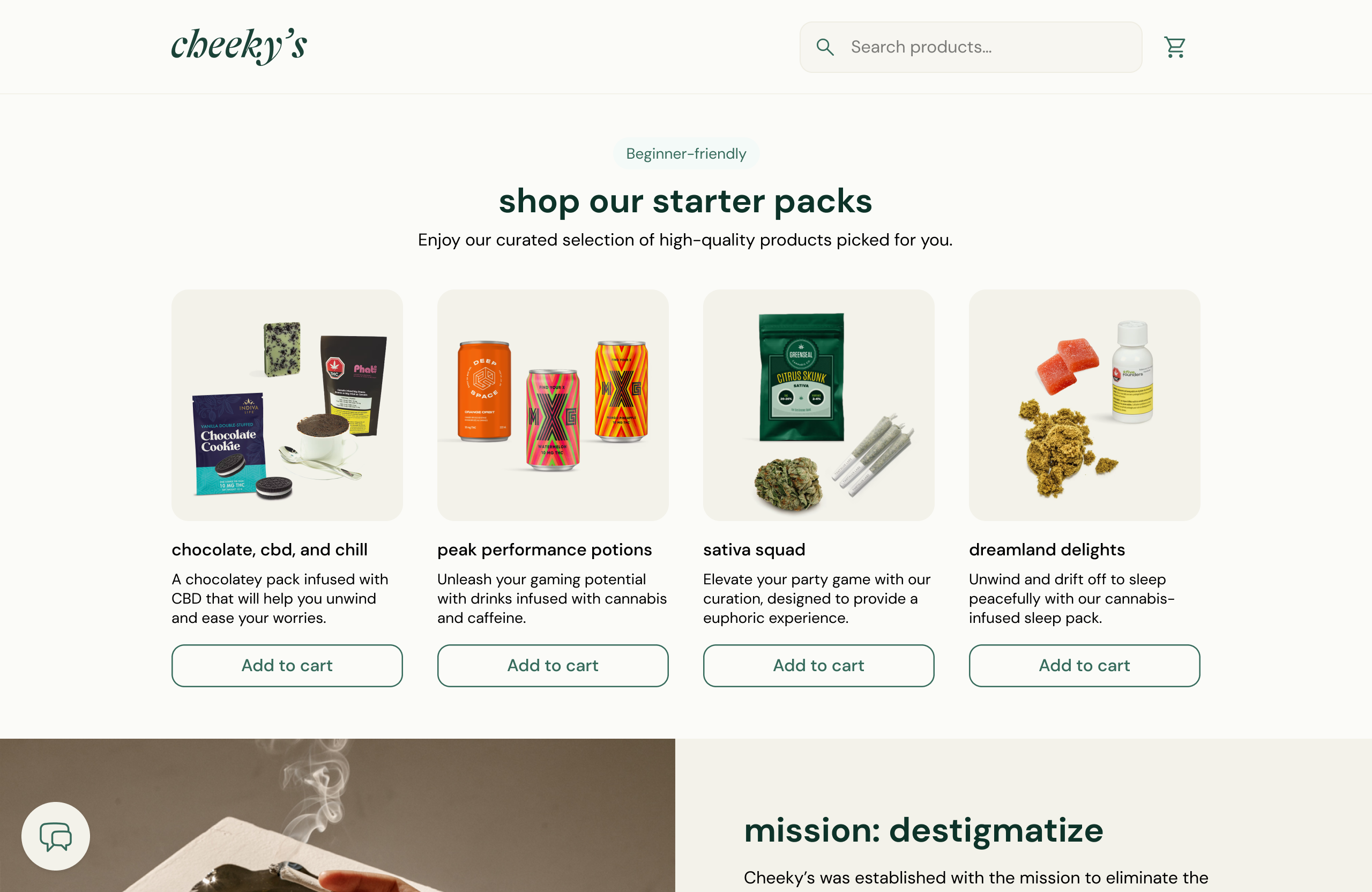
A user views the cannabis starter packs available on the home page
Proposed Feature
Answering common questions with the information hub
Beginner cannabis consumers can visit the information hub to learn more about its benefits, methods of consumption, the different strains and forms, and more. They can read everything they need to know about cannabis by clicking on the tabs to dynamically change the information on the layout, providing information in an easily-digestible manner.
A user explores the educational resource to learn more about cannabis
Proposed Feature
Supplying information about usage and effects in the product catalog
When the beginner cannabis consumer feels informed enough to browse the product catalog, they can hover over icons to read additional information such as the side effects of a certain product and the intensity of the effects, allowing them to make informed decisions before purchasing.
A user hovers over icons on a product page to learn more about its side effects
Design Process
In three weeks, our solution evolved to support both goal-oriented and exploratory users.
Initially, the educational resource we designed comprised two lengthy pages packed with large amounts of information. While it served its purpose of informing the reader, the content was not scannable, and it appeared rather overwhelming.
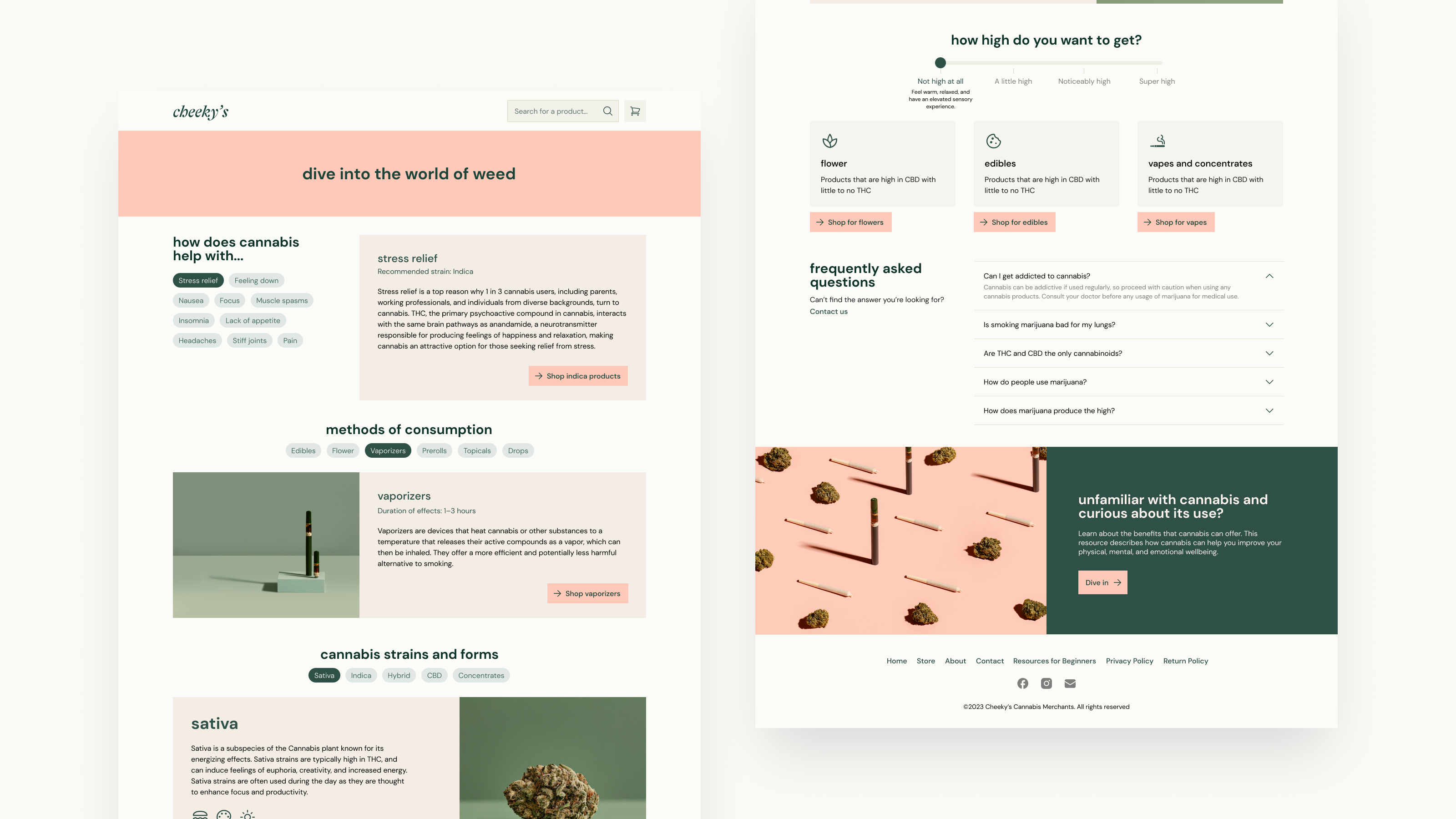
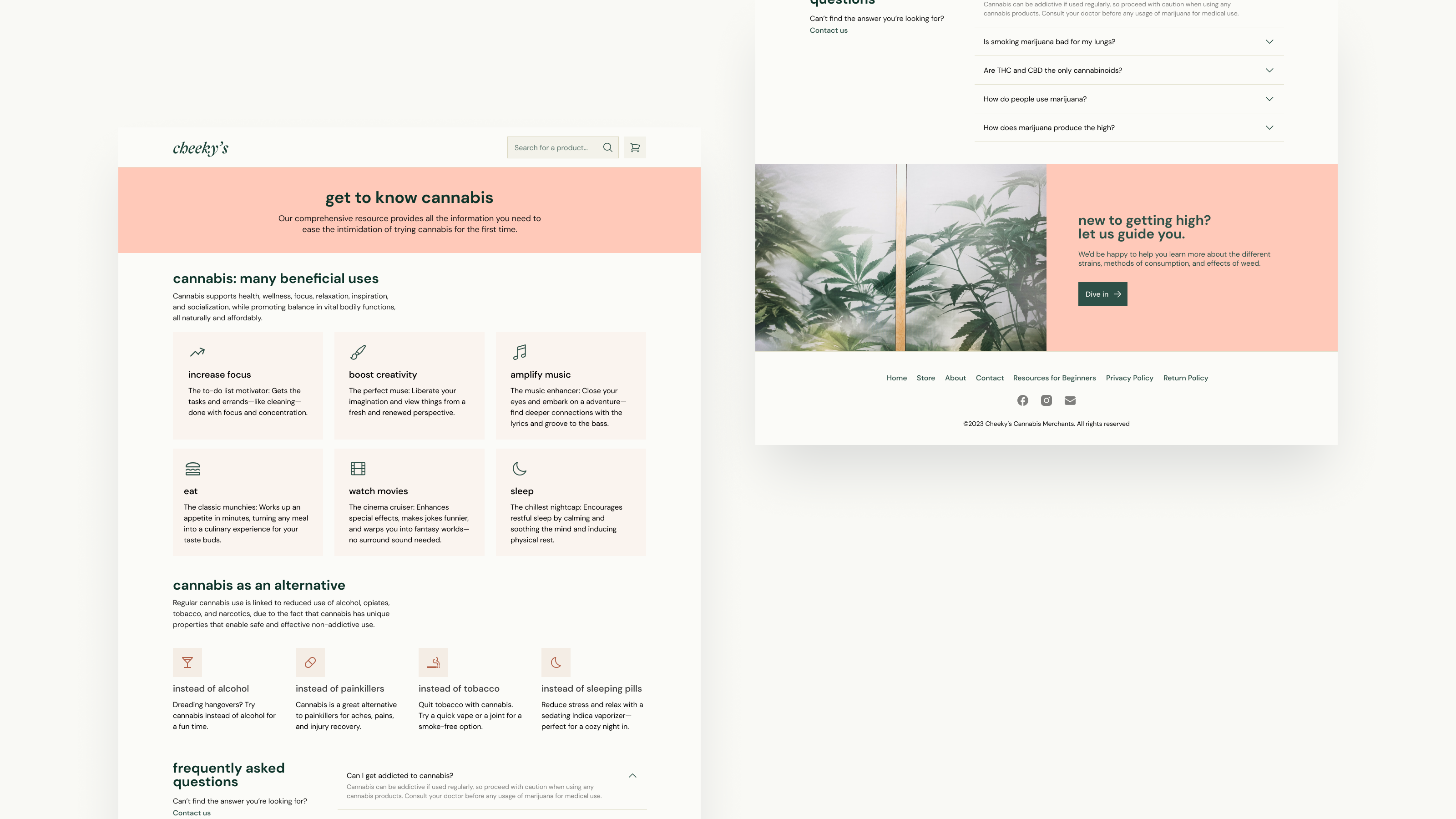
Iteration #2
Our second iteration enabled users to learn in bite-sized portions tailored to their interests, eliminating the need to sift through irrelevant information.
We condensed the content into a single page. Information is chunked under tabs with a card presenting data corresponding to the selected tab. The content in the card dynamically changes when a chip is clicked. This approach allows users to learn in small, bite-sized chunks. Additionally, with this approach, users will only see information pertaining to what their learning interests and not need to sift through irrelevant data.
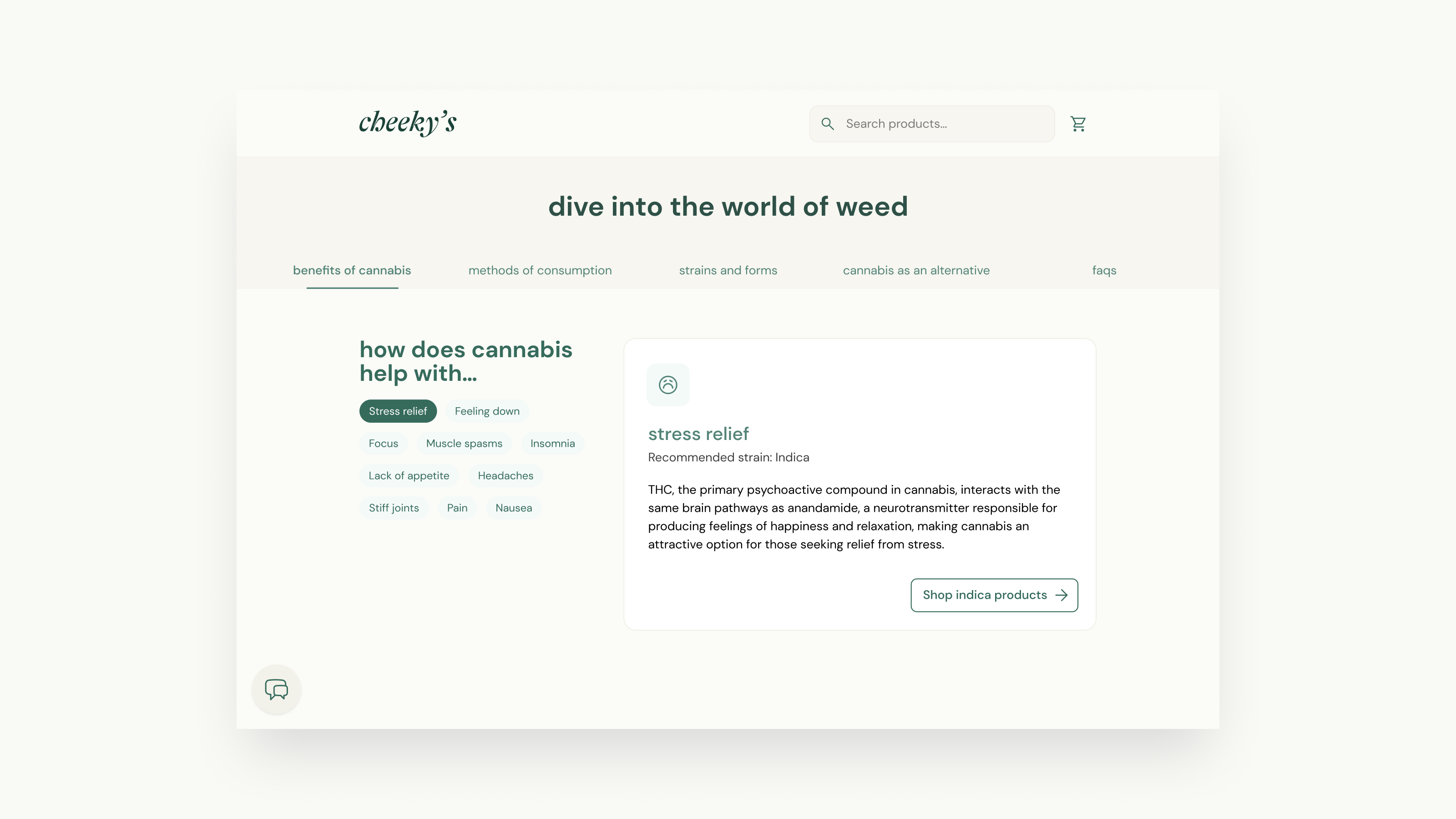
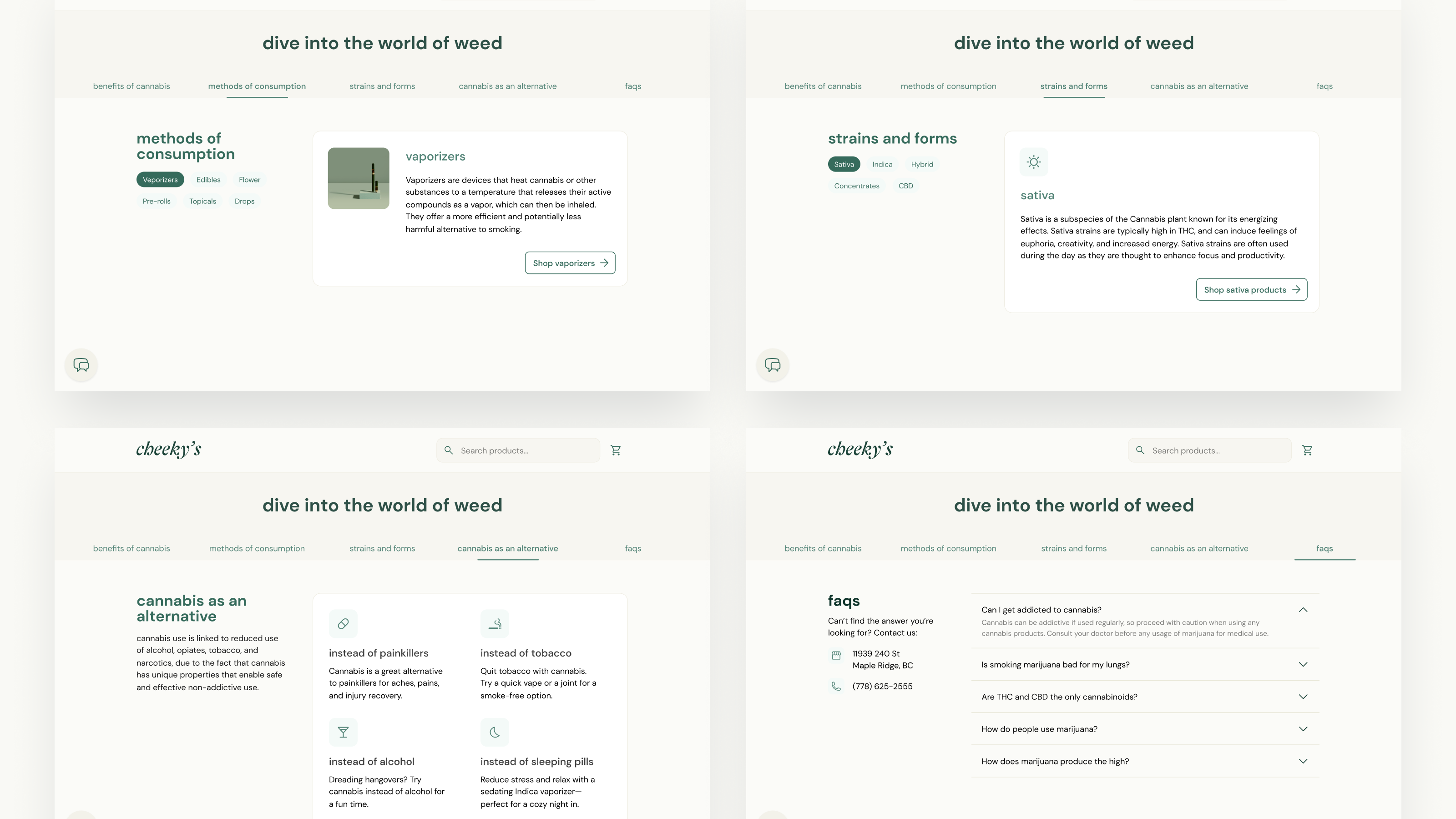
Valuable Feedback
Our solution could be stronger if users did not have to be entirely reliant on the information hub.
While it’s valuable to have this resource available for the website, the teaching team prompted us to brainstorm ways to provide users more support for learning. The goal was to seamlessly integrate informative interactions throughout the platform, ensuring that valuable information wasn’t confined solely to the information hub.
Improvements
I refined the existing design by prototyping solutions that anticipate user needs, aiming to make their experience more seamless.
This involved integrating features allowing users to access product information directly within the chat, facilitating the asking of clarifying questions to boost their confidence in making informed purchase decisions.
A user views additional details about a product from the chatroom
More Improvements
Another interaction I prototyped within the chat was the ability to add products to the cart by dragging the item or clicking the “Add to cart” button from the dropdown menu. This functionality eliminates the need for users to exit the chat to individually add products to their cart.
This approach benefits the user, but Cheeky’s as well; by reducing friction in the purchasing process, we increase the likelihood of completing a sale.
A user adds multiple products recommended by the budtender to their cart
Learnings and Takeaways
One big takeaway from this project was learning how to frame a problem while considering not only how a solution can address a user need but also deliver value to a business as well. In this instance, taking the time to help users be familiar with the product offerings available at Cheeky’s creates trust and motivates them to make another purchase.
Reflection
Something we also could have done to strengthen the proposal of these features was to design what the solution might look like from a budtender’s point of view. How might a budtender curate a starter pack, for example? What might their user journey of joining a chat with a user look like?
I also would have liked to interview first-time cannabis consumers to evaluate the effectiveness of our proposed solution; unfortunately, this was beyond the scope of our project. However, despite not being user tested, the teaching team assessed that our project would address the user need and also deliver value to Cheeky’s Cannabis Merchants.